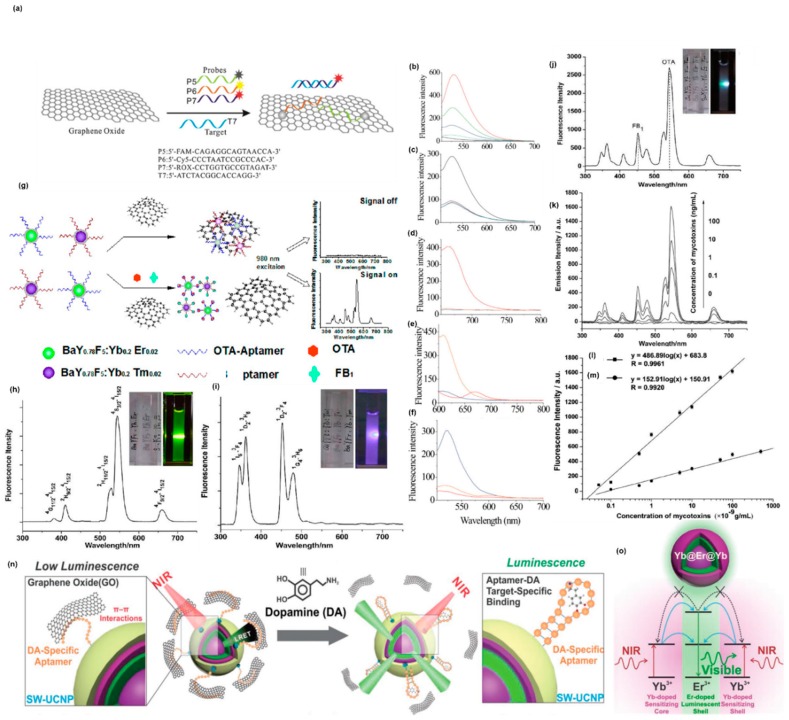Figure 2.
(a) GO-based multicolor DNA analysis. (b) Fluorescence intensity of P1 in response to GO (black), GO+T1 (red), GO+T2 (cyan), GO+T3 (blue), and GO+T4 (green). (c) Fluorescence response of P1 (10 nM) GO mixture to the fully complementary target T1 (black) and to a single-base mismatch target: M1 (red), M2 (blue), and M3 (green). (d–f) Multicolor detection that is shown by the response of the fluorescence peaking at different spectra for different targets: T5 (blue), T6 (red), and T7 (orange). (g) Design of the Up-conversion nanoparticles (UCNPs)-aptamer/GO sensor. The fluorescence spectra emitted by BaY0.78F5:Yb0.2, Er0.02 UCNPs (h), BaY0.78F5:Yb0.2, Tm0.02 UCNPs (i), and mixed UCNPs (j). (k) Multiplex detection of the UCNPs-GO aptasensor in the presence of both OTA and FB1. The fluorescence intensity plotted against the concentration of ochratoxin (OTA) (l) and FB1 (m). (o) The detection process of dopamine by the sandwich-structured UCNP. (p) Sandwich-structured UCNP and the prohibited energy-back transfer. Reprinted with permission from References [78,80,81].

